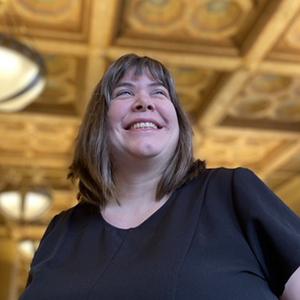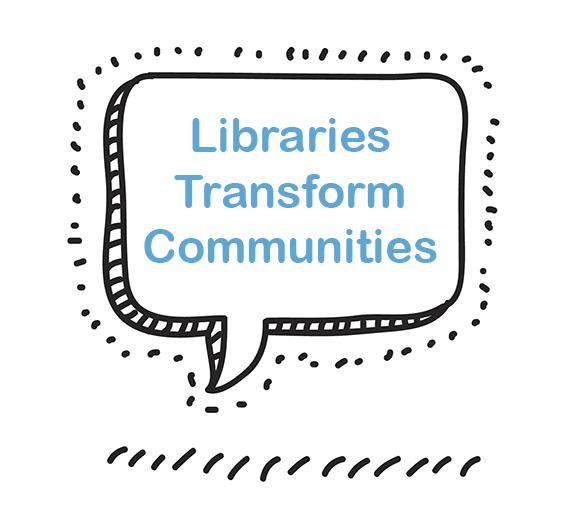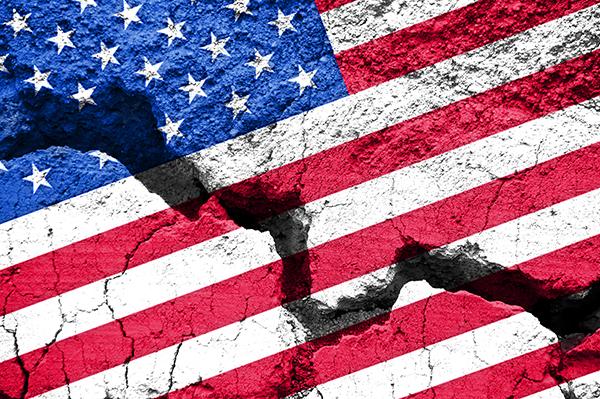by Sara Ring
Quick Summary
I attended the webinar Reflective Structured Dialogue Method with Essential Partners, which featured John Sarrouf (Essential Partners, a partner in the series) and Harriet Hayes (Bridgewater College). The purpose of reflective structured dialogue is to improve communication in order to enhace curiosity, mutual understanding, and respect. What follows is a summary of the second webinar in the ALA Libraries Transforming Communities three-part series.

I attended the webinar Reflective Structured Dialogue Method with Essential Partners, part of the ALA Libraries Transforming Communities series, which featured John Sarrouf (Essential Partners, a partner in the series) and Harriet Hayes (Bridgewater College). John Sarrouf explained that Essential Partners helps people build the capacity to engage, live, and thrive with their differences. It's easy to forget, but "behind every belief is a story, and behind every story a person." He told the story of a campus that held the Diwali Festival, a Hindu festival of lights, celebrated every fall. The celebration often incorporates use of the swastika, an important Hindu symbol, meaning a marker of goodness. But, to the Jewish community on campus, the swastika meant something entirely different. The campus, recognizing that the Diwali Festival was approaching, created a dialogue program on campus. They invited the Jewish and Hindu groups to give presentations on the history of both symbols, and then they split into small groups for discussion. Instead of conflict, there was connection. The organizers of the Diwali Festival decided not to use the swastika symbol that year, out of respect for the pain it would bring to the campus Jewish community.
John Sarrouf pointed out that we are at a very divided point in time. As just one example, the Pew Research Center study Political Polarization of the American Public, 1994-2014 showed that Republicans and Democrats are more divided along ideological lines today, and feelings of distrust and dislike towards each other are also deeper and more extensive than at any time in the past 20 years. The study also mentioned that the majority of Americans actually do not have uniformly conservative or liberal views, and most don't see either party as a threat to the nation, yet those in the center are relatively disengaged. We tend to hear more of the extreme conservative or extreme liberal voices. It is hard to have engaged dialogues when we're only hearing and seeing divisions like this. Yet, we can't afford to avoid tough questions that face our society today.
Reflective Structured Diaogue Method
The purpose of reflective structured dialogue is to improve communication in order to enhace curiosity, mutual understanding, and respect. One of the slides contained the following list of outcomes one would expect to see after participating in this type of dialogue: stereotypes dissolve, partisans are re-humanized, participants listen to understand, new patterns of communication take root, there is a move from certainty to curiosity to caring, changed attitudes and enhanced empathy, self reflection and reflections of others' perspectives, and new possibilities that emerge for collaboration.
Why are difficult conversations so difficult? We discussed what your brain does when it's threatened. The parts of our brain responsible for responding to threats to our physical safety are the same parts that respond when we feel our values are being threatened (fight, flight, or freeze). In fact, when we face a threat, our pre-frontal cortex functions of our brain diminish and reflection is not possible. It takes 1/5 of a second for the protection parts of our brain to take over when facing a threat, and about 20 minutes to recover. If we keep experiencing threats when having conversations, we enter into a cycle of attack/defend, experience triggers, and tend to move into a state of vigilance, always looking for a threat. And the cycle repeats. There was a graphic shared that showed how polarization is a self-perpetuating system. People can eventually despair, and just choose to drop out of discussions all together, and the only voices that stay engaged are the radical ones.
Dialogue is a conversation for the purpose of exchanging information, enhancing mutual understanding, disovering shared meanings, reducing prejudice, surfacing creative thinking, and developing trust. When preparing to have a dialogue, circles are important. Groups of 6-8, sitting in a circle, for 45-90 minutes is one structure. Here are a few components and tips shared for hosting a dialoague in your community:
- Welcome and orientation: Explain the purpose & structure of the dialogue.
- Introduction: People introduce themselves so they can begin to tell their story. We lean towards stories, values, and shining moments - to things people might have in common (and lean away from rank, position, resume, etc).
- Communication agreements: Creating a "safe-enough" space. For example, agree that people can pass if they don't wish to respond, or we'll speak one at a time and not engage in side conversations.
- Opening questions: 1-3 predesigned questions answered in a go-around. For example "Share an experience you have had that informs the way you approach how we regulate guns in our community?" Stay away from binary questions (right vs. wrong). From "should we or shouldn't we" to "what values lead you to your beliefs about x." Build in reflection time for people to be able to respond to questions.
- Questions of genuine interest: Ask each other questions such as things you really want to know more about, based on what the speaker has said.
- Closing questions: For example "as you end this dialogue what would you like to continue to think or dialogue about?"
The reflective, structured dialogue model is scalable in that you can create a resource of community facilitators to support large groups all over campus. It is teachable as people can learn to facilitate these kinds of dialogues without being an expert. And, the model is adaptable. It can be used in full form to address the most divisive topics or in parts to allow more people to be heard.
We ended the webinar by thinking through a few questions:
- Who can you partner with?
- What already exists as an event that can be transformed into a dialogue?
- Whose voices need to be heard and how can you get them in the room?
- Is there a space at the library that could be the go-to spot for dialogue?
- What would you need to feel like you could initiate or convene a dialogue?
The first two webinars gave me a lot of information to digest, and I'm starting to think about how I can use this knowledge in my own community. I invite others to take a look at the series, and contact me if you're interested in exploring and discussing further.
- View archived recordings on the ALA Programming Librarian website.


